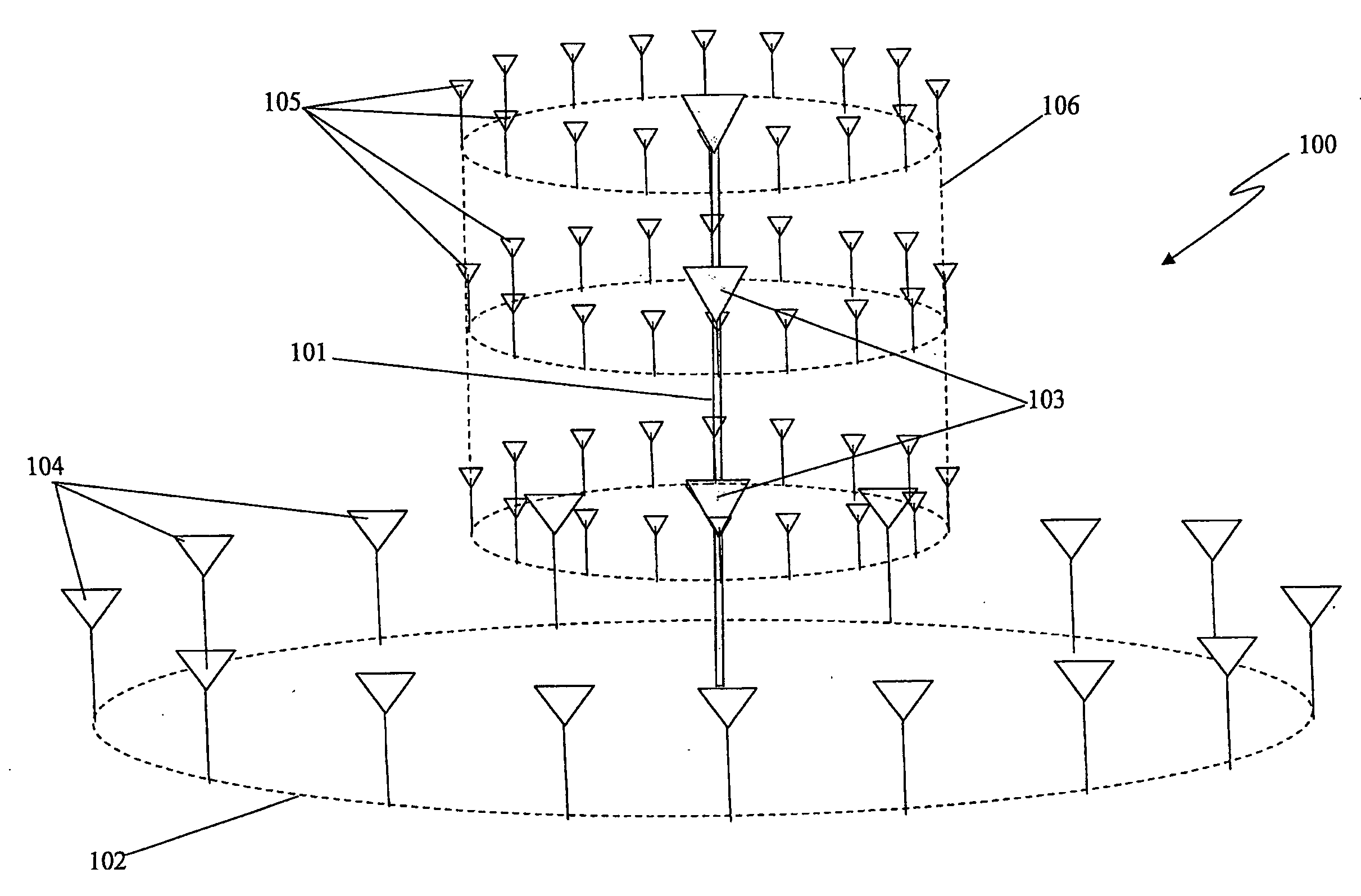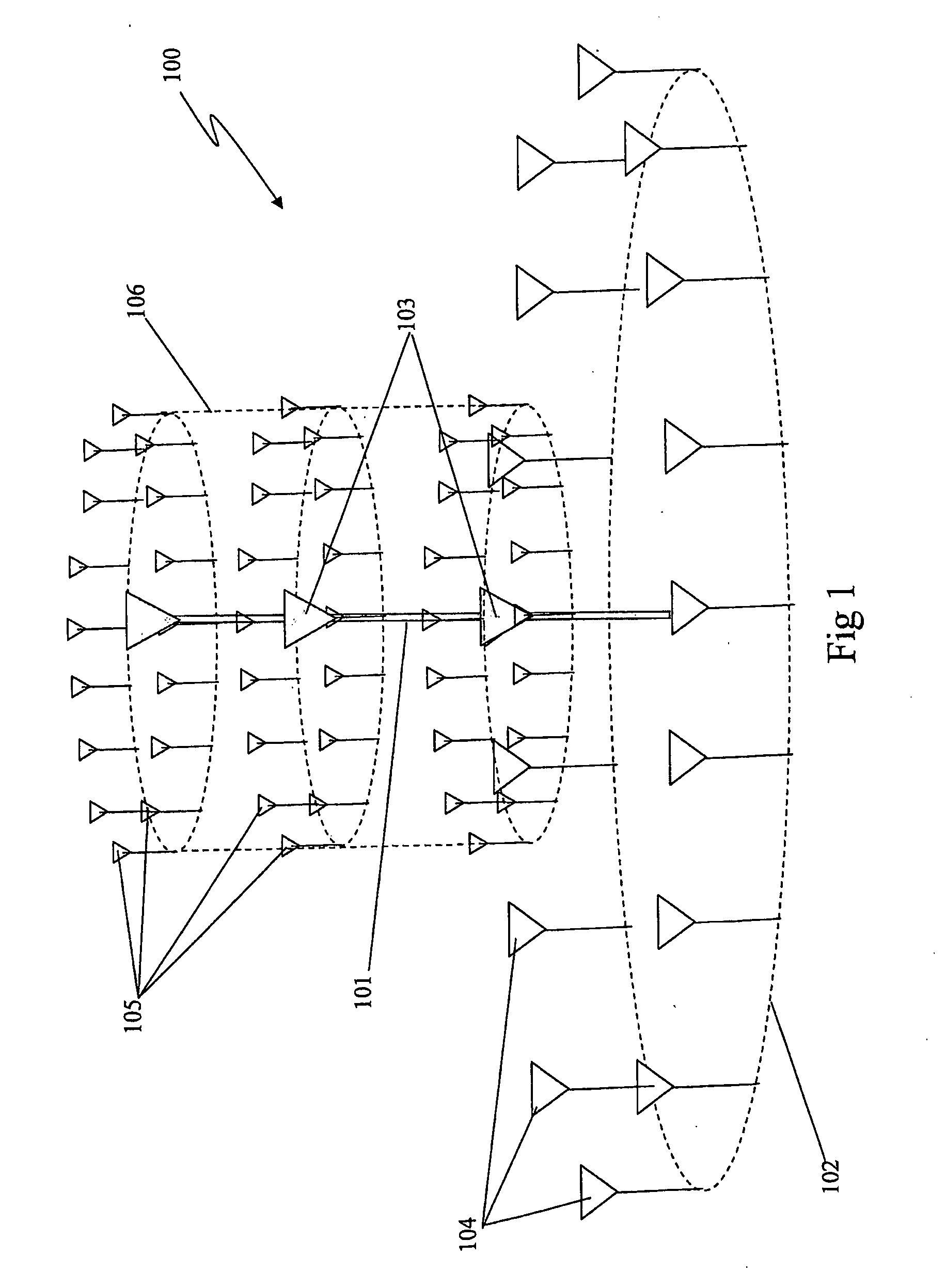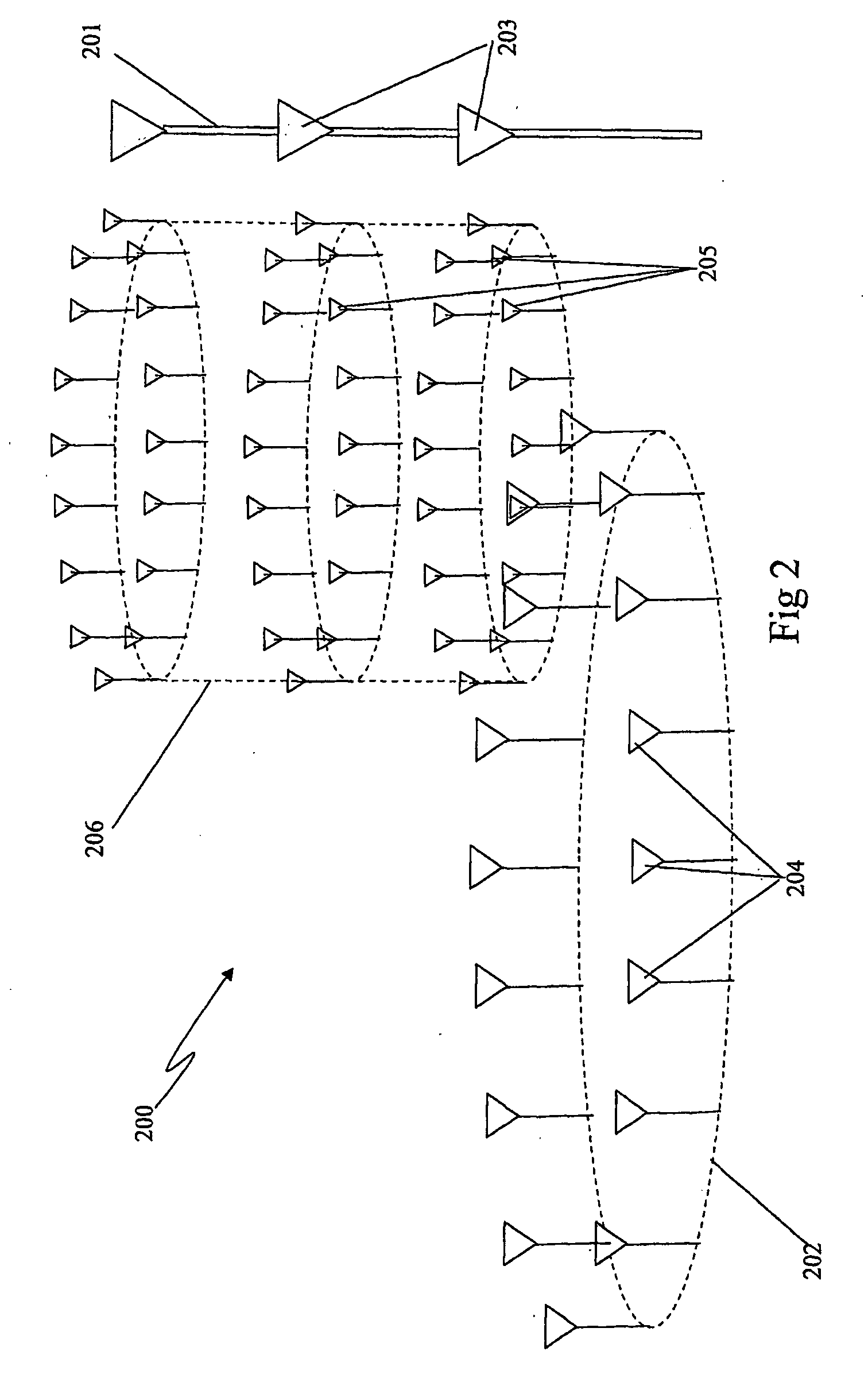Surveillance Apparatus and Method
a technology of surveillance apparatus and antenna, applied in the field of surveillance apparatus and method, can solve the problems of increasing the number of elements populating the radar aperture, prone to wind loading effects, and exceedingly difficult to mount on board ships and other moving vehicles, so as to facilitate the design of a radar and improve the range resolution. , the effect of high range resolution
- Summary
- Abstract
- Description
- Claims
- Application Information
AI Technical Summary
Benefits of technology
Problems solved by technology
Method used
Image
Examples
Embodiment Construction
[0092]With reference to FIG. 1 there is illustrated one possible configuration of a phased array 100 according to an embodiment of the present invention. The diagram shows the positions of the transient elements which together with the physical elements, notionally form a synthetic array for processing targets in the far field.
[0093]The array 100 in this instance comprises a linear sub-array 101 of N omnidirectional transmitter elements and a planar sub-array 102 of M receiver elements. In this particular instance the M receivers are arranged in a circular array about the linear sub-array. Such a configuration enables a full 360 degrees of cover in azimuth and typically + / −60 degrees in elevation. It will be appreciated by those of ordinary skill in the art that the planar sub-array need not be a circular array but may take the form of any other suitable planar shape such as a square, rectangle, triangle etc.
[0094]The process of generating transient elements makes use of the fact th...
PUM
 Login to View More
Login to View More Abstract
Description
Claims
Application Information
 Login to View More
Login to View More - R&D
- Intellectual Property
- Life Sciences
- Materials
- Tech Scout
- Unparalleled Data Quality
- Higher Quality Content
- 60% Fewer Hallucinations
Browse by: Latest US Patents, China's latest patents, Technical Efficacy Thesaurus, Application Domain, Technology Topic, Popular Technical Reports.
© 2025 PatSnap. All rights reserved.Legal|Privacy policy|Modern Slavery Act Transparency Statement|Sitemap|About US| Contact US: help@patsnap.com



